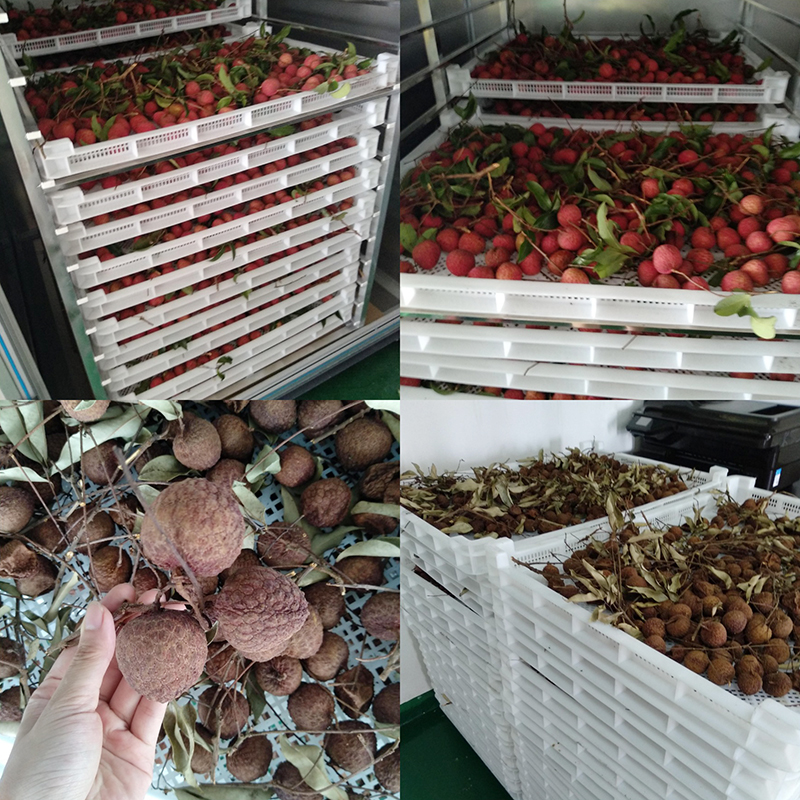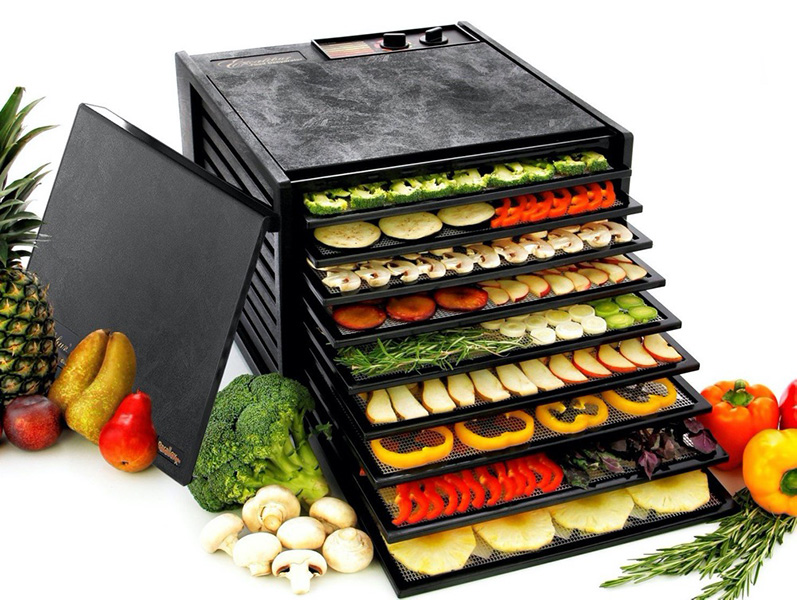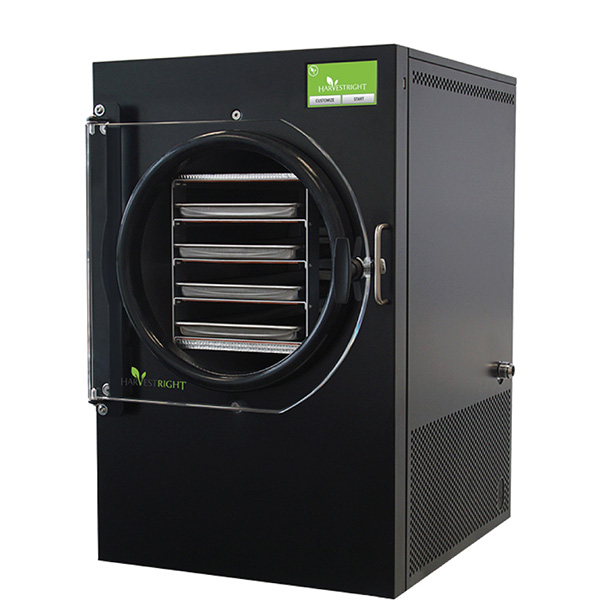
Content Menu
● Introduction to Freeze Drying
● Understanding the Freeze Drying Process
● Types of Freeze Dried Food Machines
● Benefits of Using Freeze Dried Food Machines
● How to Use a Home Freeze Dryer
● Maintenance and Care of Freeze Dried Food Machines
● Applications of Freeze Dried Food
● The Future of Freeze Drying Technology
● Conclusion
● Frequently Asked Questions
>> 1. Q: How long does the freeze drying process take?
>> 2. Q: Can all types of food be freeze dried?
>> 3. Q: How does the cost of a home freeze dryer compare to buying freeze dried foods?
>> 4. Q: Is freeze dried food healthy?
>> 5. Q: How do you rehydrate freeze dried food?
Introduction to Freeze Drying
Freeze drying, also known as lyophilization, is a cutting-edge food preservation method that has gained significant popularity in recent years. This process involves removing moisture from food while preserving its nutritional value, flavor, and texture. At the heart of this innovative technology are freeze dried food machines, which have revolutionized how we approach long-term food storage and preservation.
Understanding the Freeze Drying Process
The freeze drying process is a marvel of modern food technology, combining the principles of freezing and dehydration to create shelf-stable products that can last for years. Here's a step-by-step breakdown of how freeze dried food machines work:
1. Freezing: The process begins by rapidly freezing the food to temperatures below -30°F (-34°C). This quick freezing helps preserve the food's cellular structure.
2. Primary Drying: Once frozen, the food is placed in a vacuum chamber. The pressure is lowered, and a small amount of heat is applied. This causes the frozen water in the food to sublimate, turning directly from ice into vapor without passing through the liquid phase.
3. Secondary Drying: After most of the ice has sublimated, the temperature is raised slightly to remove any remaining bound water molecules, resulting in a product with only 1-4% residual moisture.
4. Sealing: The dried food is then sealed in moisture-proof packaging to prevent rehydration and contamination.

Types of Freeze Dried Food Machines
Freeze dried food machines come in various sizes and capacities, catering to different needs:
1. Home Freeze Dryers: These compact units are designed for personal use, allowing individuals to preserve their own food at home. They typically process 4-10 pounds of food per batch.
2. Commercial Freeze Dryers: Larger machines used by food manufacturers and businesses. They can process hundreds of pounds of food in a single batch.
3. Industrial Freeze Dryers: Massive units used in large-scale food production, pharmaceutical applications, and scientific research.
Benefits of Using Freeze Dried Food Machines
The advantages of freeze drying food are numerous:
1. Long Shelf Life: Freeze dried foods can last up to 25 years when properly stored, making them ideal for emergency preparedness and long-term storage.
2. Nutritional Retention: Unlike other preservation methods, freeze drying retains most of the food's original nutritional value.
3. Flavor and Texture Preservation: The process maintains the food's original taste and texture, which is restored upon rehydration.
4. Lightweight and Compact: Freeze dried foods are significantly lighter and take up less space than their fresh counterparts, making them perfect for camping, hiking, and space travel.
5. Versatility: A wide range of foods can be freeze dried, including fruits, vegetables, meats, dairy products, and even entire meals.
How to Use a Home Freeze Dryer
For those interested in freeze drying at home, here's a basic guide to using a home freeze dryer:
1. Prepare the Food: Clean and slice the food into uniform pieces for even drying.
2. Arrange on Trays: Place the food on the machine's trays, ensuring pieces don't overlap.
3. Load the Machine: Insert the trays into the freeze dryer.
4. Start the Cycle: Close the door and initiate the freeze drying cycle. Most home units are automated and will guide you through the process.
5. Wait for Completion: The process can take 20-40 hours, depending on the food and quantity.
6. Package and Store: Once complete, package the freeze dried food in airtight containers or mylar bags with oxygen absorbers.

Maintenance and Care of Freeze Dried Food Machines
To ensure your freeze dryer operates efficiently:
1. Clean the interior and trays after each use.
2. Regularly check and replace the vacuum pump oil.
3. Inspect seals and gaskets for wear and tear.
4. Keep the area around the machine well-ventilated.
5. Follow the manufacturer's maintenance schedule for optimal performance.
Applications of Freeze Dried Food
Freeze dried foods have found applications in various fields:
1. Emergency Preparedness: Long shelf life makes them ideal for disaster kits.
2. Outdoor Recreation: Lightweight and nutritious meals for camping and hiking.
3. Military Rations: Compact, lightweight, and long-lasting food for troops.
4. Space Exploration: Nutritious meals for astronauts that can withstand space travel conditions.
5. Culinary Innovation: Chefs use freeze dried ingredients for unique textures and flavors.
The Future of Freeze Drying Technology
As technology advances, we can expect to see improvements in freeze drying efficiency, reduced energy consumption, and more affordable home units. The industry is also exploring new applications, such as preserving probiotics, developing new pharmaceutical delivery systems, and creating innovative food products.
Conclusion
Freeze dried food machines have opened up new possibilities in food preservation, offering a way to store food long-term without sacrificing quality or nutrition. Whether you're a prepper, outdoor enthusiast, or simply someone interested in reducing food waste, freeze drying technology offers an exciting solution. As this technology continues to evolve, it's likely to play an increasingly important role in our approach to food storage and preservation.

Frequently Asked Questions
1. Q: How long does the freeze drying process take?
A: The process typically takes between 20 to 40 hours, depending on the type and quantity of food being dried.
2. Q: Can all types of food be freeze dried?
A: Most foods can be freeze dried, including fruits, vegetables, meats, dairy, and even full meals. However, foods with high fat content may not freeze dry as well.
3. Q: How does the cost of a home freeze dryer compare to buying freeze dried foods?
A: While the initial investment in a home freeze dryer is significant, it can be cost-effective in the long run for those who frequently use freeze dried foods or want to preserve large quantities of home-grown produce.
4. Q: Is freeze dried food healthy?
A: Yes, freeze dried food retains most of its original nutritional value. The process preserves vitamins, minerals, and enzymes better than many other preservation methods.
5. Q: How do you rehydrate freeze dried food?
A: To rehydrate freeze dried food, simply add water. The amount of water and time needed varies depending on the food, but most items rehydrate quickly, often in just a few minutes.












